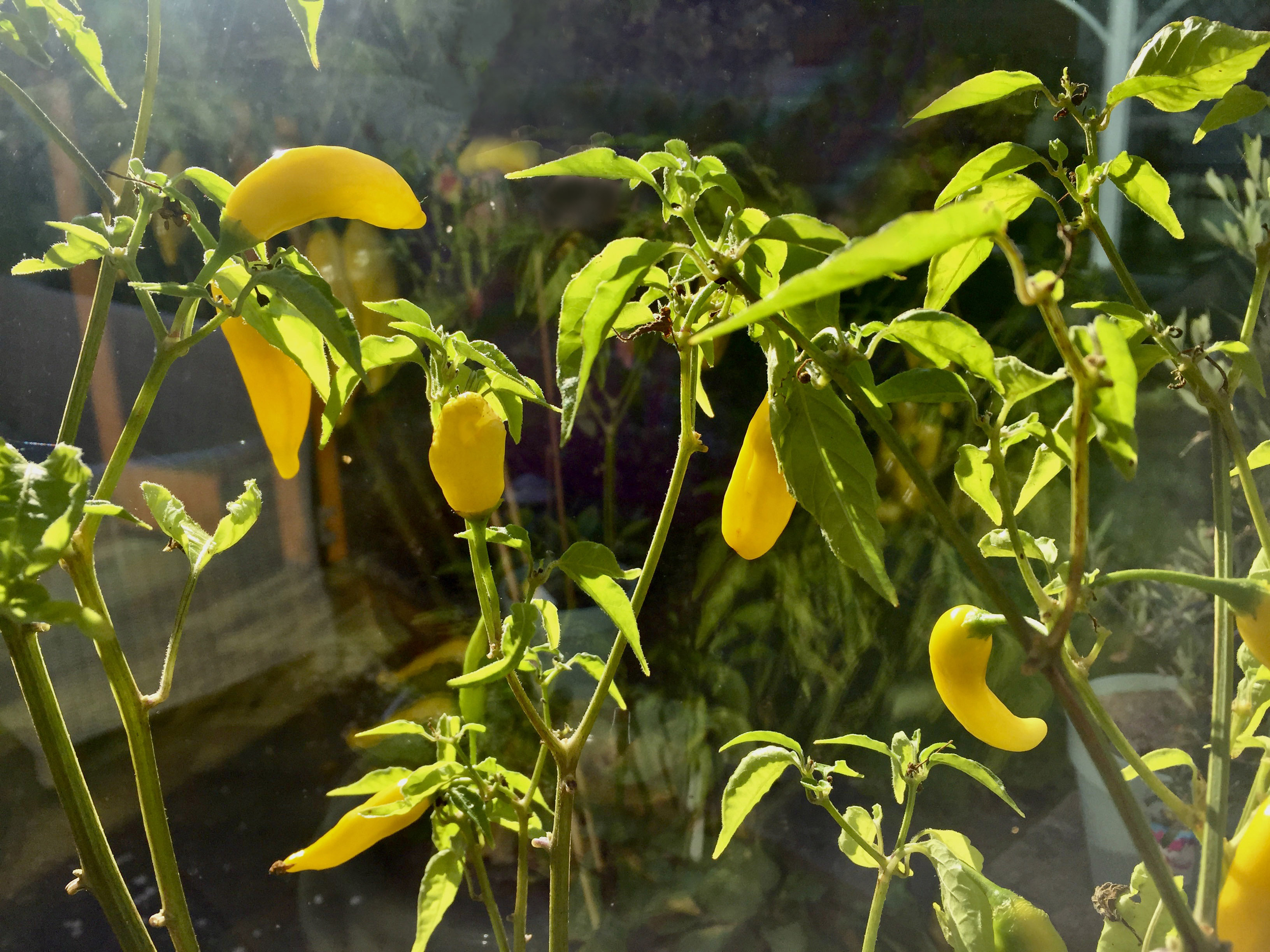It is starting to heat up now in the UK with temperatures in the 20’s for the first time. It’s still far too cold for chillies to go outside but if you are anything like me your windowsills will be groaning with chillies, peppers and tomatoes. I’m always on the look out for something a little unusual in the chilli department and I first picked up these lemon drop (or Aji Limon) chillies a few years ago after seeing them recommended by James Wong in his Grow for Flavour book so thought I would give it a go.
Lemon drops are on the hotter end of the scale, 30k-60k on the Scoville scale which puts them in between a jalapeño and a habanero in terms of heat, about the same as tabasco. They are originally from Peru and are one of the most common peppers grown in that country and has been in cultivation for 7,000 years. In Peru it is used as a seasoning pepper and I’ve had a go at drying some to make chilli flakes which has been extremely successful but you can use them wherever you would normally use chillies.
Lemon drop is quite a droopy chilli plant so may need a little support, tying the branches in to a cane to keep them upright, alternatively you can grow in a hanging basket. I currently have mine supported by a metal obelisk.

In the kitchen
Lemon drop is an attractive yellow chilli with a slight citrus tang. Each chilli is about the size of your little finger and ripens from green to yellow. It is medium high in heat. It can be used wherever you would use chillies in a recipe. I have also frozen and dried them with sucess.
Yield and plant health
You will get over 20 chillies from each plant but you could get up to 100 if given enough space to grow. It isn’t the most attractive chilli to look at being quite straggly and will probably need a bit of support but is fairly easy to propagate from seed with a little heat and plants are fairly quick to grow compared to some of the super hots. It will grow up to 160cm if given ideal situations and at that size will need support..

Suppliers

Growing
Chillies and peppers need a heated propagator to get going, with a steady heat of 27-30 degrees for a minimum of two weeks, but occasionally up to twelve for super hots to germinate.
In Jan/Feb, make a mix of 2/3 seed compost to 1/3 perlite. Sow a few seeds in to a three inch pot and cover with 5 mm of either the seed mix or vermiculite. Label and place in the propagator. Water sparingly (misting the surface can be ideal) until germinated.
Once germinated and you can see the first set of true leaves, gently pot on in to three inch pots in a good free draining compost and keep in a sunny spot, with a minimum temperature of 12 degrees C. If you are able to grow under LED grow lights then your plants will be stockier and more robust. Blowing on them them gently everyday will also encourage that, stimulating wind.
Water sparingly until they are 3-6 inches high when you can pot on in to 9 inch pots or, if passed the risk of frost, plant in greenhouse soil or in a sunny, sheltered position outside. Feed and water once a week.
Chillies can take varying times to start flowering. Padron peppers are very early, habanero can take 100 days. If you are growing inside you will need to fertilise the flowers yourself with a small brush. If growing in a greenhouse or conservatory ventilate well on hot days as temperatures over 36 degrees can lead to flowers dropping off.
Once the weather starts to turn colder you can start to think about overwintering chillies. Follow this link for instructions on how to do that.

Alternatives
Great info. Will have a go at overwintering.
Thanks
LikeLiked by 1 person